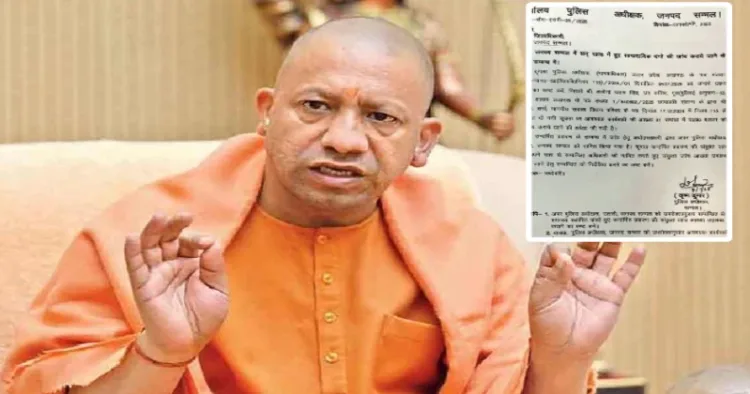The Uttar Pradesh government has initiated a comprehensive review of the 1978 Sambhal riots, one of the most devastating communal tragedies in the region’s history. This decision follows Chief Minister Yogi Adityanath’s statements in the legislative assembly, where he brought renewed attention to the violence and its unaddressed aftermath, setting the stage for potential revelations and long-overdue justice.
The riots began on March 29, 1978, engulfing Sambhal in violence for several days. Official accounts reported 24 fatalities, but survivors and recent statements from CM Adityanath reveal that 184 Hindus were burned alive, homes and shops seised, and scores rendered homeless. The violence left deep scars on the community, with curfews imposed for two months as the administration struggled to restore order. A total of 169 cases were registered, yet the majority of the accused remained unidentified, with political influences allegedly suppressing accountability.
On January 8, 2025, Moradabad Commissioner Anjaneya Singh directed Sambhal District Magistrate Dr. Rajendra Pensia to hand over all records related to the riots. This directive followed a letter from Sambhal Superintendent of Police (SP) KK Bishnoi on January 7, informing the DM of Uttar Pradesh Legislative Council member Shrichandra Sharma’s demand for a reinvestigation. Sharma’s letter, filed under Rule 115, called for an exhaustive inquiry into the riots’ causes, fatalities, and outcomes.
Deputy Secretary of Home Affairs Satendra Pratap Singh instructed immediate action, setting a one-week timeline for a report. A joint administrative and police inquiry has been proposed, with the DM tasked to designate an officer for the probe. Commissioner Singh has also convened a meeting to coordinate efforts. Initial findings and a comprehensive report are expected imminently.
In his assembly speech, CM Adityanath highlighted a historical pattern of communal violence in Sambhal, tracing incidents back to 1947. He enumerated riots in 1947, 1948, and between 1958 and 1962, culminating in the catastrophic events of 1978. Adityanath stated, “In 1978, 184 Hindus were collectively burned alive, and a curfew was imposed for several months. Riots occurred again between 1980-1982, 1986, and the 1990s, with recurring deaths and destruction.”
The Chief Minister criticised opposition parties for their silence over the years, accusing them of neglecting the victims. He further alleged that the Bajrang Bali temple in Sambhal, a symbol of communal harmony, was kept shut since 1978 due to political motives.
The investigation, led by Sambhal SP KK Bishnoi and DM Rajendra Pensia, seeks to:
- Reassess the actual death toll and identify previously unnamed victims.
- Investigate the roles of individuals whose involvement in the riots was suppressed.
- Address claims of wrongful property acquisitions and forced displacements.
- Examine the legal basis for acquittals in past cases and determine whether lapses occurred.
Commissioner Singh clarified that while no formal reinvestigation has been ordered yet, directives have been issued to compile detailed records of all cases. The Moradabad prosecution department and Sambhal police are collaborating to gather data, including court proceedings and police archives.
The tragedy of 1978 left countless survivors in a state of limbo. Many allege that their properties were unlawfully taken over during the riots, with no legal recourse provided. Affected families have also spoken out about the trauma of displacement and the lack of recognition for their losses.
Local residents revealed that the official death toll significantly understated the scale of the tragedy. Survivors argue that political motivations shielded perpetrators and suppressed evidence, allowing decades of inaction.
Recent events in Sambhal have reignited communal sensitivities. Last December, the administration reopened an “ancient temple” in the city, sparking controversy. Additionally, a court-ordered survey of the Shahi Jama Masjid in November 2024 faced resistance, with authorities encountering opposition from a Muslim mob. CM Adityanath pointed to these incidents as evidence of attempts to disrupt Sambhal’s peace and derail efforts for justice.
SP KK Bishnoi assured that every effort is being made to ensure a thorough investigation. “We are gathering details from court and police records to reassess the cases, including the causes and fatalities,” he stated. Commissioner Singh added, “Any land-related disputes raised by survivors will be addressed legally. If properties were acquired wrongfully, they will be returned to their rightful owners.”
The investigation also aims to bring transparency to the administration’s handling of the riots and ensure accountability for any lapses. Officials have pledged to resolve disputes according to the law and restore justice to affected families.
For survivors of the 1978 Sambhal riots, the renewed inquiry represents a long-overdue step toward acknowledgment and justice. While political and communal tensions linger, the investigation’s findings could shed light on the suppressed truths of the tragedy and pave the way for healing. The UP government’s commitment to addressing historical injustices has offered a glimmer of hope to those who have waited 46 years for resolution.










![A Representative image [ANI Photo]](https://organiser.org/wp-content/uploads/2025/12/representative-image-e1765612818961-120x70.webp)







Comments